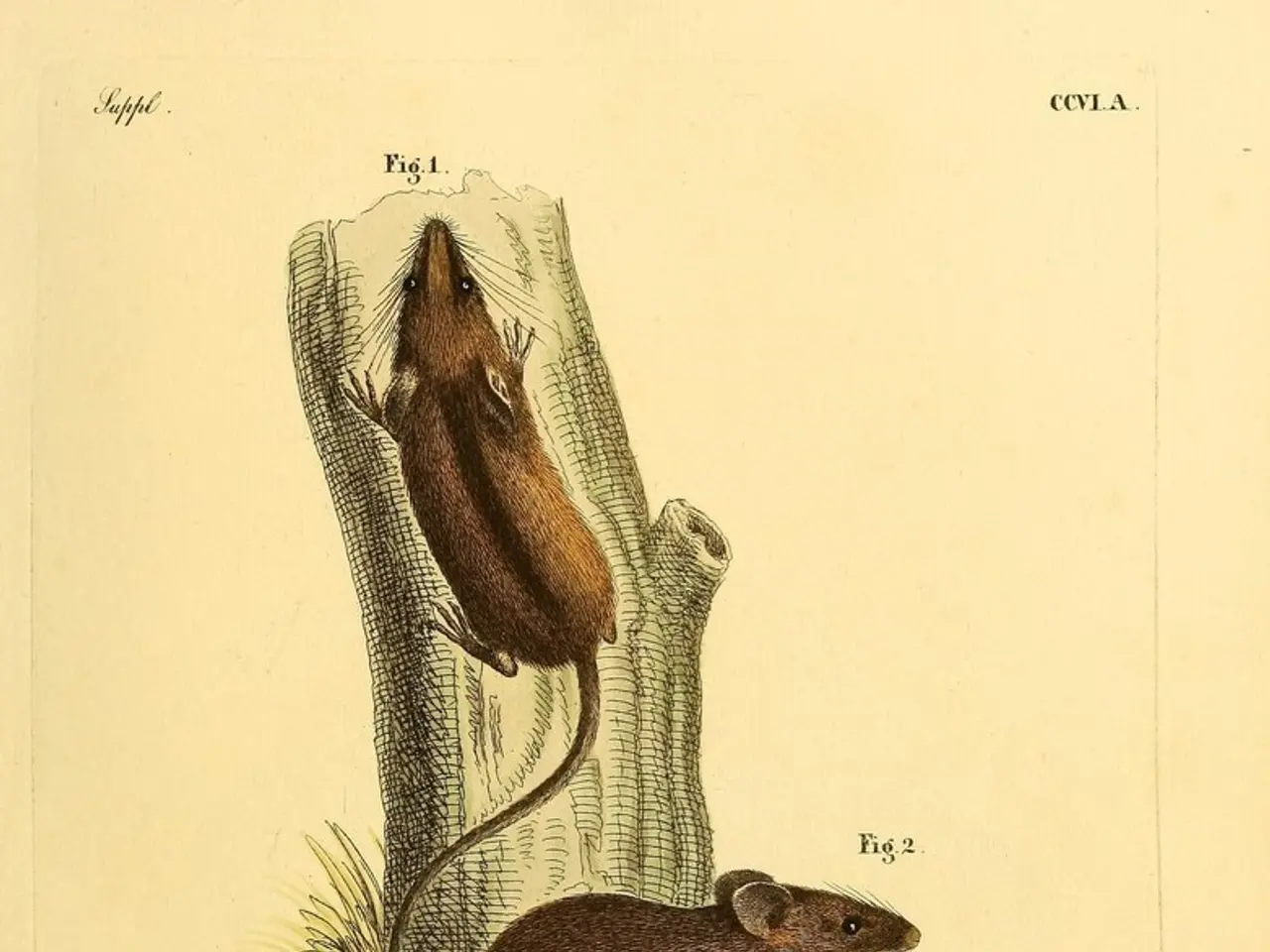Enhanced Associations Between Metabolic Regions in Brain as Examined by Positron Emission Tomography
Recent advancements in Fluorodeoxyglucose-Positron Emission Tomography (FDG-PET) have revolutionised our understanding of brain network organisation in various neurological disorders, particularly neurodegenerative diseases.
One key development is the ability to conduct detailed metabolic mapping in neurodegenerative diseases. FDG-PET now allows for precise quantification of cerebral glucose metabolism in brain regions commonly affected by conditions such as Alzheimer's disease (AD) and mild cognitive impairment (MCI). By using predefined meta-regions of interest (MetaROIs), researchers can reliably detect hypometabolism patterns linked to cognitive decline. This approach aids in tracking disease progression and differentiating among disorders, such as AD versus other dementias, with improved anatomical alignment and intensity normalisation techniques enhancing consistency across subjects.
FDG-PET is increasingly integrated with other biomarkers, such as amyloid PET, CSF biomarkers, and volumetric MRI, to provide comprehensive assessments in clinical trials for neurodegenerative diseases like AD. For instance, recent trials involving anti-amyloid therapies have used FDG-PET to monitor metabolic changes associated with clinical outcomes, although amyloid PET remains the primary imaging modality for amyloid burden.
Innovations in artificial intelligence (AI) and radiomics are further expanding FDG-PET's role. AI tools have been developed that analyse FDG-PET scans to identify distinct dementia types by recognising complex metabolic patterns across brain networks. These innovations turn metabolic brain data into actionable clinical insights, allowing for more accurate diagnosis and potentially personalised treatment strategies. Radiomics—the extraction of large amounts of quantitative features from FDG-PET images—is emerging as a powerful method to predict and evaluate cognitive impairment related to neurodegeneration, providing a deeper understanding of brain network alterations at a granular level.
FDG-PET is also being used to explore metabolic abnormalities in other neurological conditions with cognitive impact, such as post-COVID-19 cognitive syndrome. Studies reveal characteristic hypometabolism in frontoparietal and temporal networks correlating with symptoms, highlighting FDG-PET's role in mapping disrupted brain networks beyond traditional disorders.
In patients progressing from normal aging to Alzheimer's disease (AD), there is a gradual breakdown of metabolic connectivity (MC), especially in the default mode network (DMN). Similar changes have been observed in Parkinson's Disease (PD) and Parkinson Atypical Syndromes, as well as in frontotemporal lobar degeneration (FTLD). In a cohort of behavioural FTD (bvFTD), Liu and colleagues reported an altered MC within the limbic cortico-striato-thalamo-cortical circuit in presymptomatic and symptomatic bvFTD. Reduced MC has been observed in both hypometabolic and non-hypometabolic areas in patients with MCI who later converted to AD, suggesting large-scale network disruptions at the prodromal stage.
In PD, a potential compensatory connectivity increase has been observed in the occipital cortex. In contrast, Ballarini and colleagues observed that psychiatric symptoms in early-onset AD are linked to increased MC in the salience network and decreased MC in the DMN. Higher cognitive reserve, linked to education, bilingualism, and gender, has been associated with increased MC in certain brain regions of patients with AD, suggesting compensatory mechanisms.
Studies in other neurological disorders, such as psychiatric disorders and epilepsy, have also revealed disruption in "normal" connectivity in critical DMN areas, such as the dorsolateral prefrontal cortex and hippocampi, and between the posterior cingulate cortex and hippocampi. In a cohort of 195 patients with amyotrophic lateral sclerosis (ALS), Pagani and colleagues reported MC changes in ALS in addition to hypermetabolism in the midbrain and hippocampal cortex, hypometabolism of left sensorimotor, and dorsolateral prefrontal cortex.
Recent research is also focusing on MC in long COVID disease, while future perspectives include single-level subjects, interorgan metabolic connectivity, and whole-body PET imaging to study brain-organ connectivity, such as the gut-brain axis. Additionally, studies by Perani and colleagues demonstrate that bilingualism enhances connectivity in the executive control and DMN networks, while Malpetti and colleagues identified more efficient network functioning in different regions based on gender: greater efficiency in the posterior DMN for male individuals, and in the anterior frontal executive network for female individuals.
In summary, recent advancements have made FDG-PET a vital tool for detailed brain network analysis in neurodegenerative diseases and other neurologic disorders. Innovations in regional metabolic quantification, integration with multimodal biomarkers, AI-enhanced diagnostics, and radiomics have expanded its role from diagnostic support to precise characterisation of brain network organisation and dysfunction across disease stages. These advances are shaping more personalised and mechanistic understandings of neurodegenerative pathology, potentially improving early diagnosis and therapeutic monitoring.
- Science has expanded the use of Magnetic Resonance Imaging (MRI) in health-and-wellness research, particularly in the field of mental health, with its integration in studies of Alzheimer's disease (AD) and other neurological disorders.
- In addition to FDG-PET, other imaging techniques like amyloid PET and volumetric MRI are used to provide comprehensive assessments in the medical-conditions domain, specifically for Alzheimer's disease.
- The application of artificial intelligence (AI) and radiomics in FDG-PET scans aids in diagnosing various mental-health disorders accurately and may lead to personalised treatment strategies for neurological disorders.




